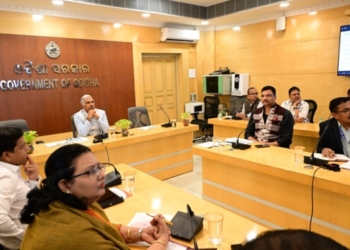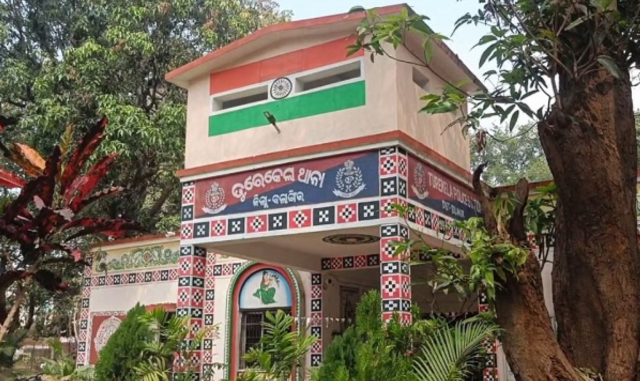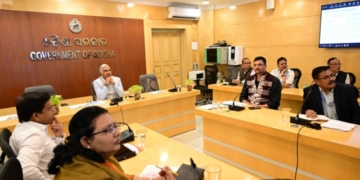Odisha is witnessing an upward trajectory in crime rates, surpassing the national average in several alarming categories.
From atrocities against women and children to Scheduled Caste (SC) and Scheduled Tribe (ST) communities, as well as cyber crimes, the state ranks 11th nationally according to the National Crime Records Bureau (NCRB) report for 2023, released by the Union Ministry of Home Affairs.
This report paints a concerning picture of escalating criminal activities, with Odisha’s crime rate significantly higher than the country’s overall figures.
The NCRB data, spanning from 1981 to 2023, includes a comparative analysis that underscores a sharp rise in crimes during the previous BJD government’s tenure, particularly against women. The comprehensive report is divided into three volumes. The first covers total registered cases, crimes against women, and district-level details. The second focuses on police efficiency, custodial deaths, forensic infrastructure, and pending cases; while the third addresses cyber crimes, SC/ST atrocities, and case outcomes.
Key highlights from the report position Odisha prominently in several negative rankings: third in crimes against women, fourth in cases against Scheduled Tribes, fifth against Scheduled Castes, fourth in POCSO (Protection of Children from Sexual Offences) cases, and sixth overall in crimes against children. The state also ranks 10th in cyber crimes. While case registration and chargesheet filing rates are satisfactory—over 85%—the conviction rate is alarmingly low at just 11.6% overall. For crimes against women, it’s 9.3%; against children, 8.1%; and for SC/ST cases, under 6%—figures that raise serious concerns about justice delivery.
Districts like Ganjam, Cuttack, Sundargarh, and Mayurbhanj consistently report high IPC (Indian Penal Code) cases. From 47,812 IPC cases in 2000 to 1,32,713 in 2023, there’s been a staggering 177% increase over 23 years. The crime rate per lakh population has risen from 142.3 to 288.6, well above the national average of 242.4.
Crimes against women have skyrocketed from 8,214 cases in 2000 to 36,432 in 2023—a 343% jump. Nationally, Odisha ranks third after Uttar Pradesh and Maharashtra in absolute numbers, but tops the list in per capita terms with 90.2 cases per lakh female population. The rise has been particularly steep since 2015, growing from 20,969 cases to 36,432 in 2023—a 74% increase in eight years. Compared to 2022, there was a 2.63% uptick in 2023.
Kidnapping and abduction cases reached 5,213 in 2023, up 4.6% from 4,982 in 2022, affecting 2,914 women/girls and 1,873 children. Despite an 86.4% chargesheet rate, convictions stand at only 7.8%. Dowry-related cruelty (IPC Section 498A) saw 17,529 cases, placing Odisha second nationally after Uttar Pradesh, with a 9.3% conviction rate—ranking the state 28th (fifth from bottom) in this category.
Child-related crimes totalled 7,402 in 2023, securing Odisha’s sixth national spot. Atrocities against ST communities numbered 3,812 (fourth nationally), and against SC, 2,487 (fifth). Cyber crimes exploded from 34 in 2010 to 1,213 in 2023—a 35-fold increase—with 842 financial frauds and 123 online harassment cases against women, ranking Odisha 10th overall.
The report also notes seven custodial deaths in 2023 (five in judicial custody, two in police)—placing Odisha sixth nationally. No police personnel convicted or arrested in these cases. From 2000 to 2023, 72 such deaths were recorded, with zero accountability.
Road accidents rose to 11,842 cases in 2023, a 5.7% increase from 11,203 in 2022, resulting in 5,213 deaths and 9,842 injuries. Hit-and-run incidents jumped 16.5% to 2,431, with conviction rates below 5% due to lack of witnesses, forensic crash reconstruction, and traffic surveillance.
Overall, 2023 saw 1,99,954 cases registered in Odisha, up from previous years, including 6,125 abductions, 1,195 rapes, 123 attempted rapes, and 1,362 murders. The surge in crimes against women, children, and cyber offences, coupled with low convictions, signals an urgent need for improved law enforcement and judicial reforms.





























